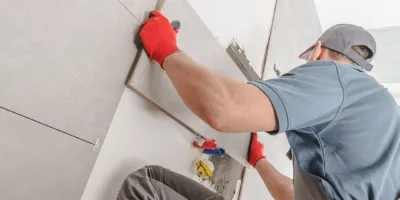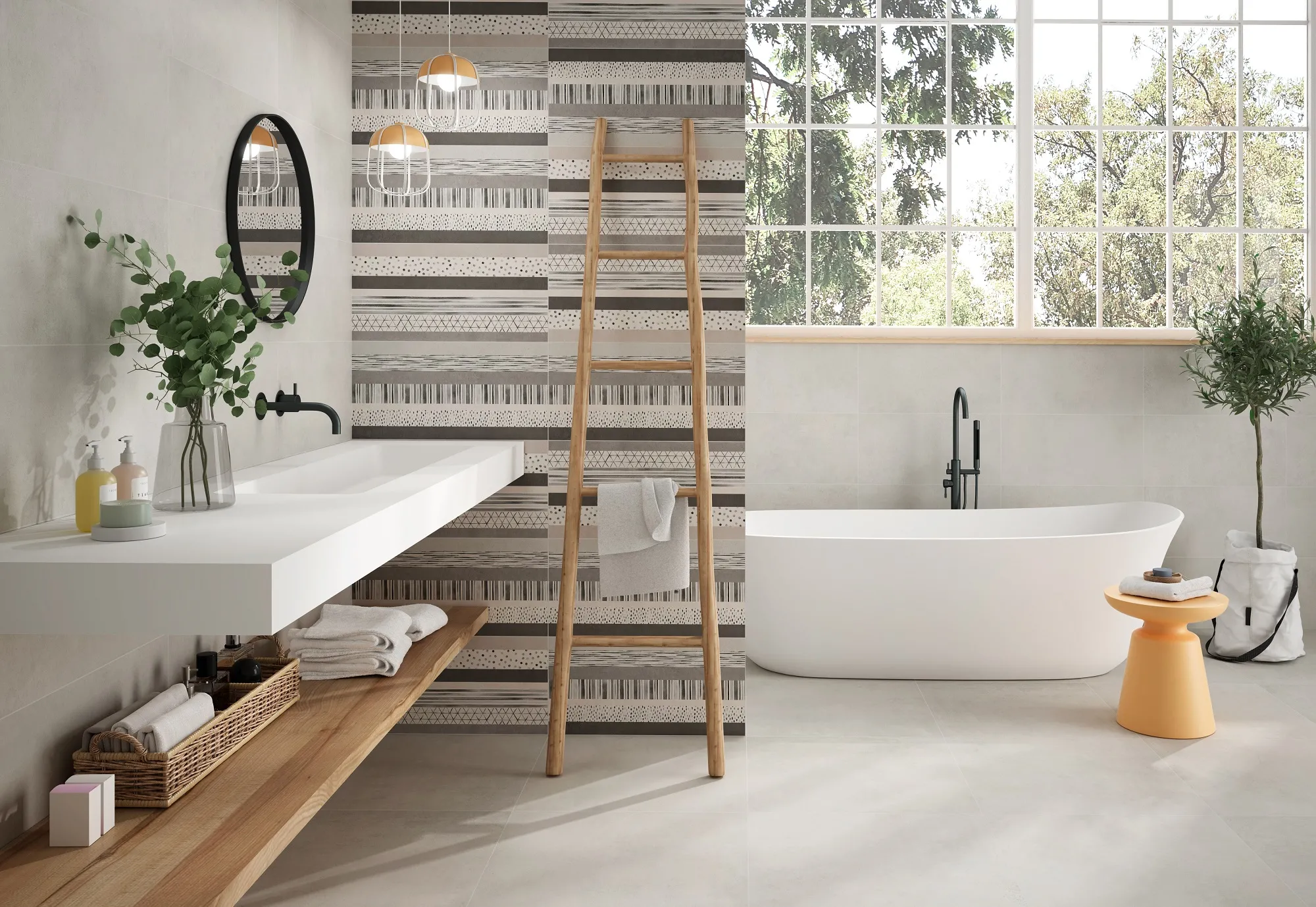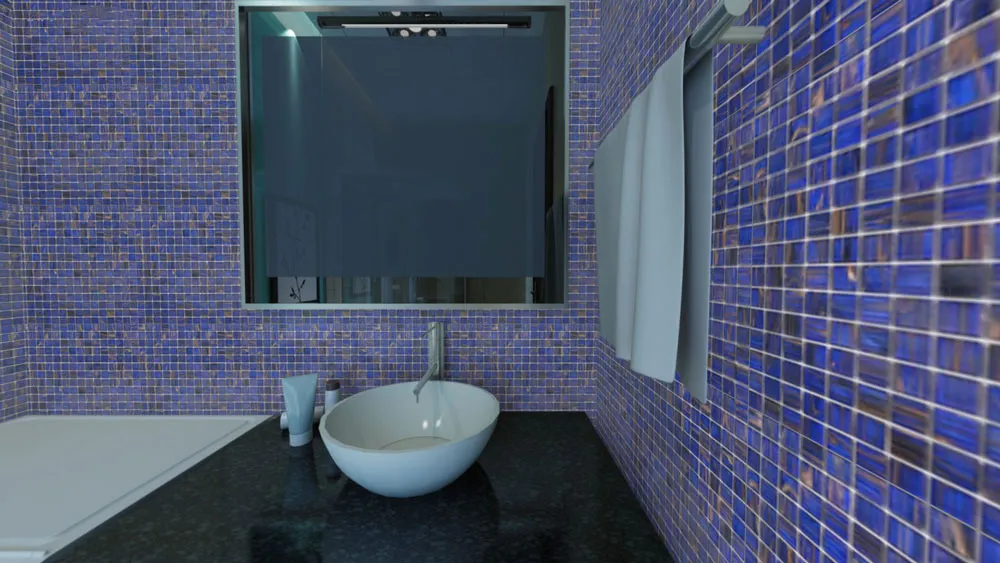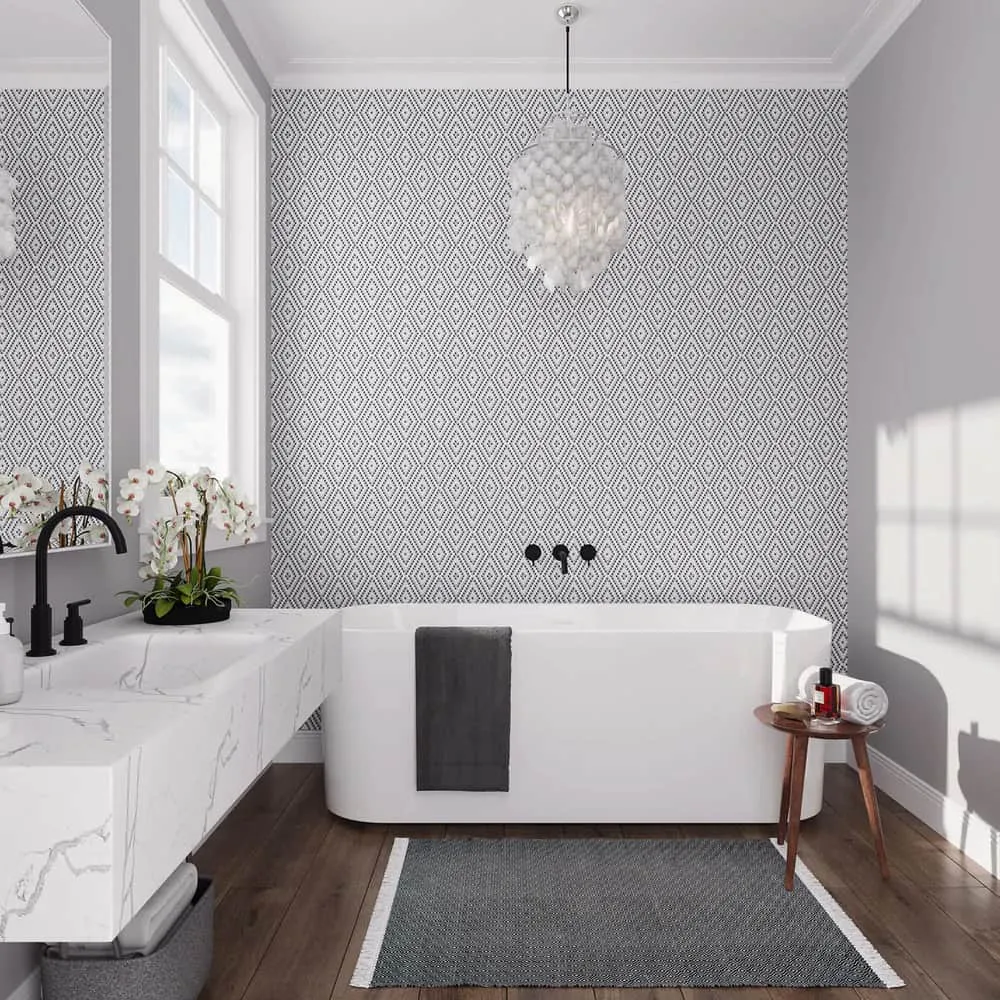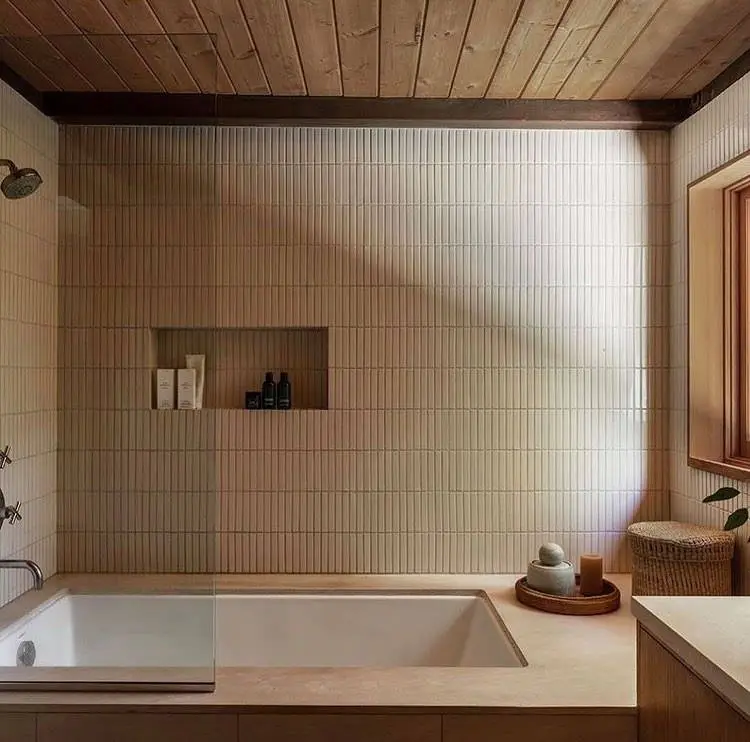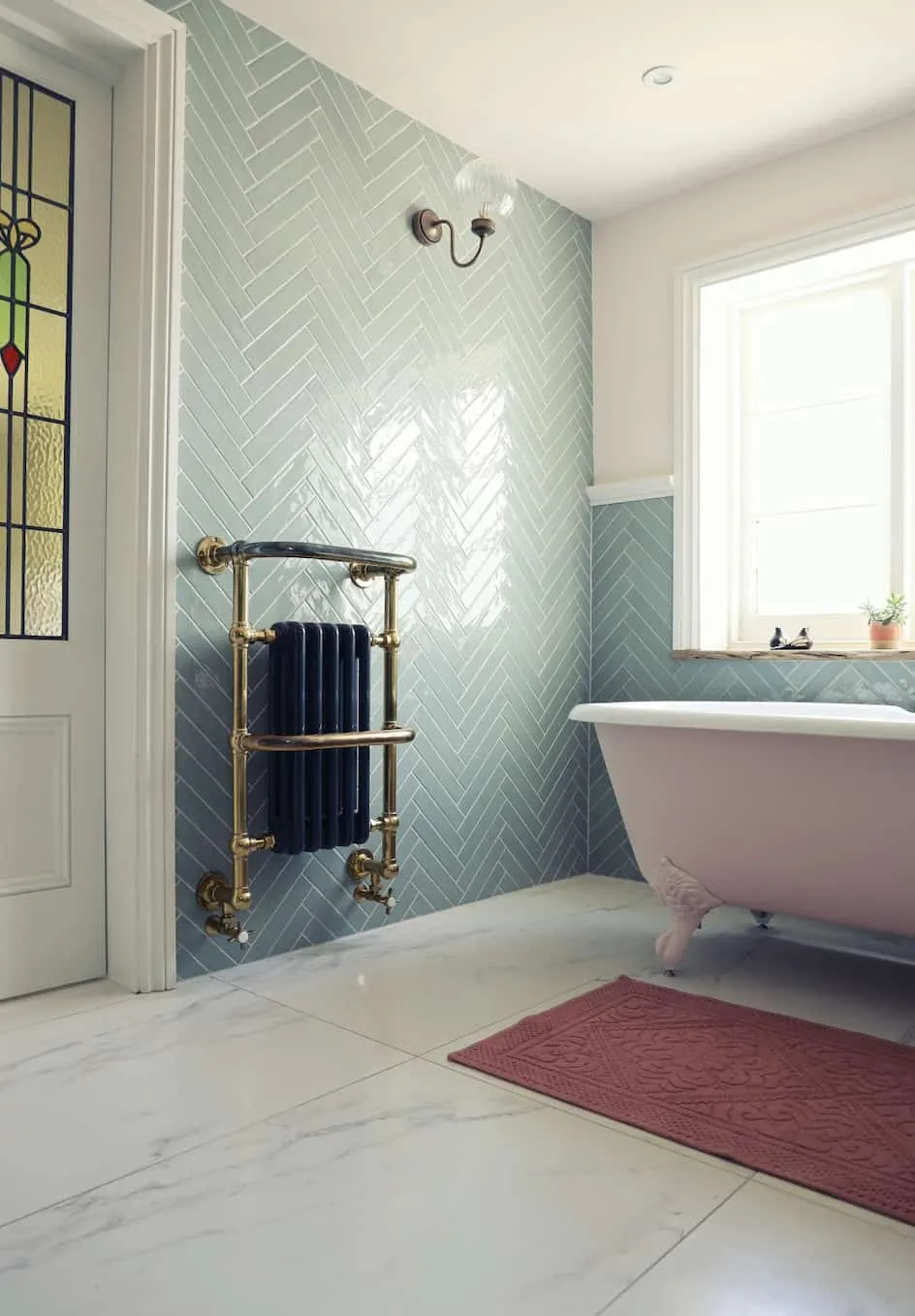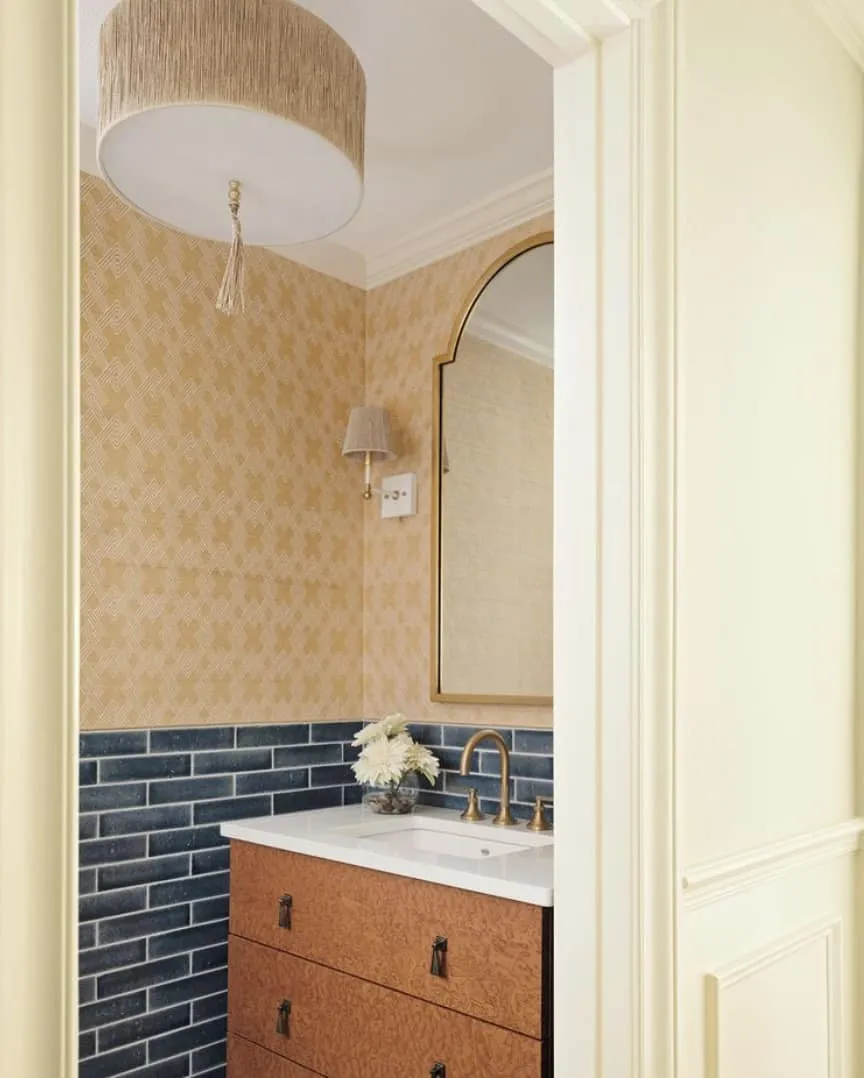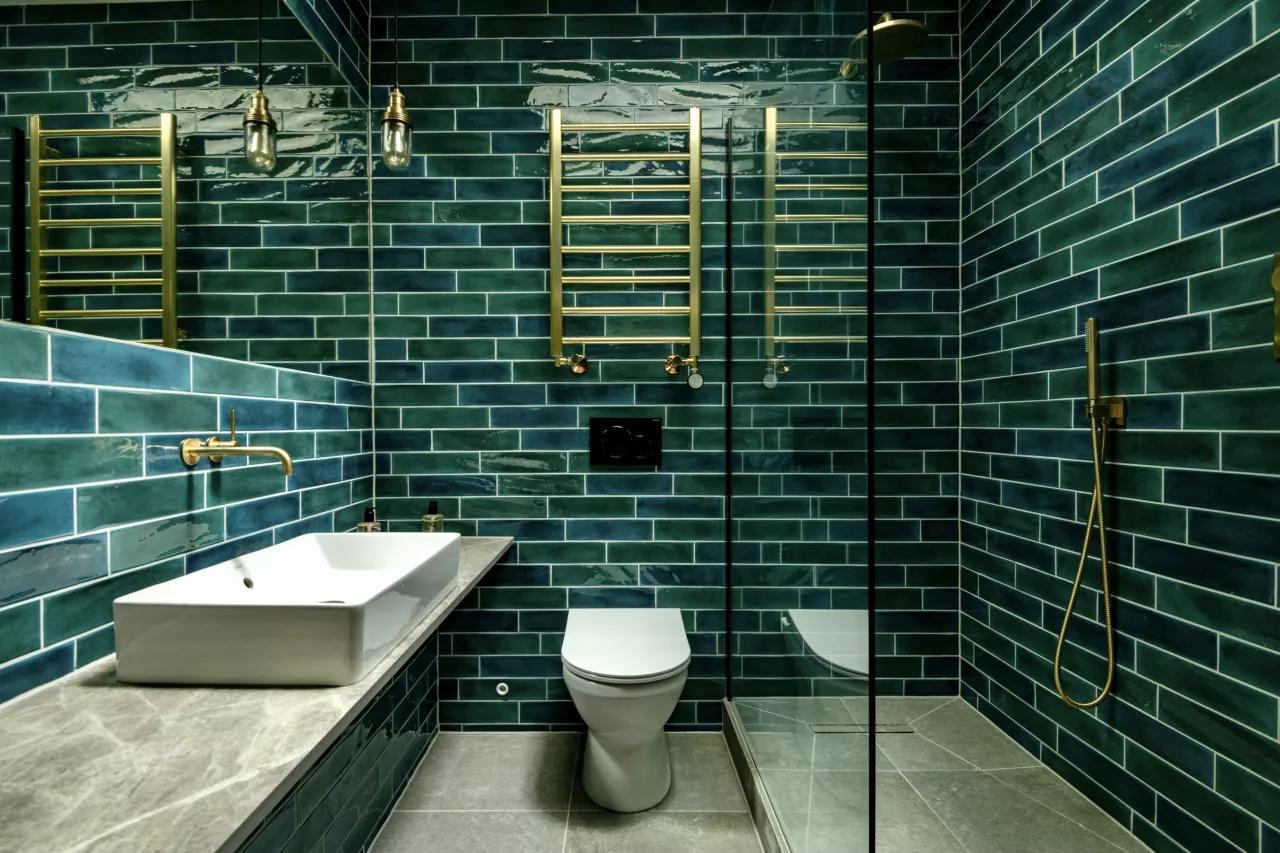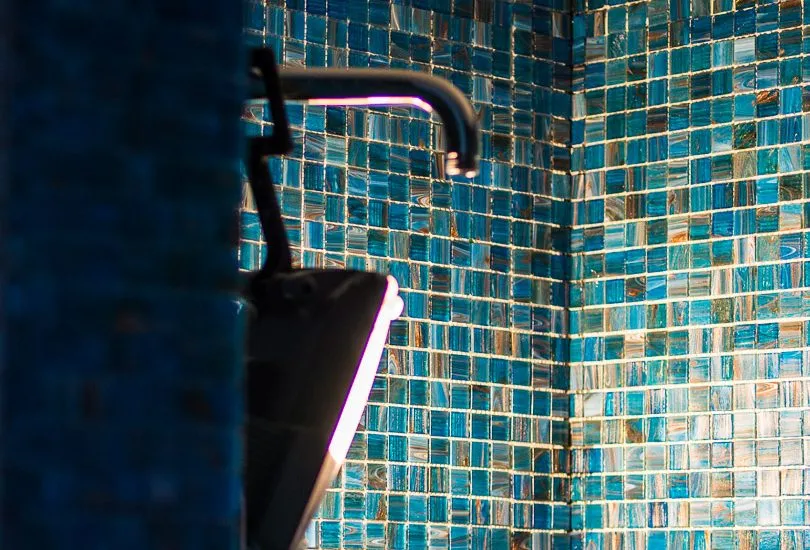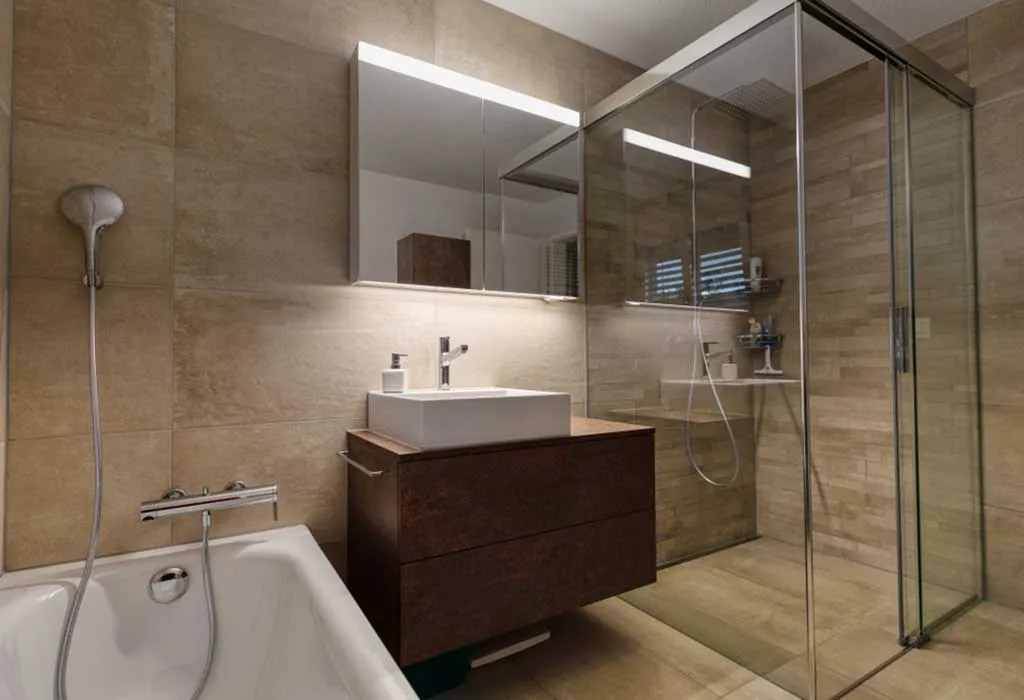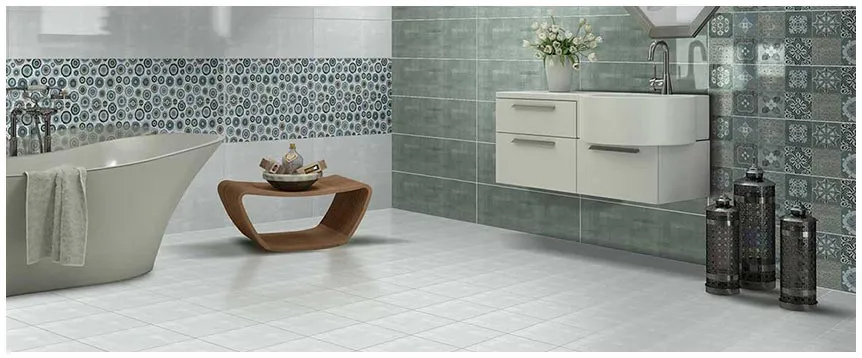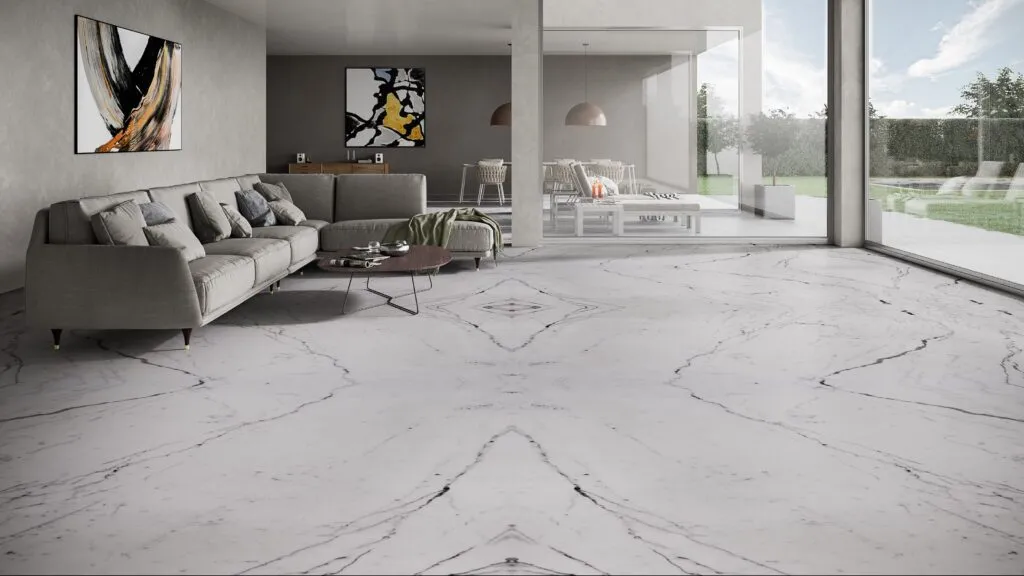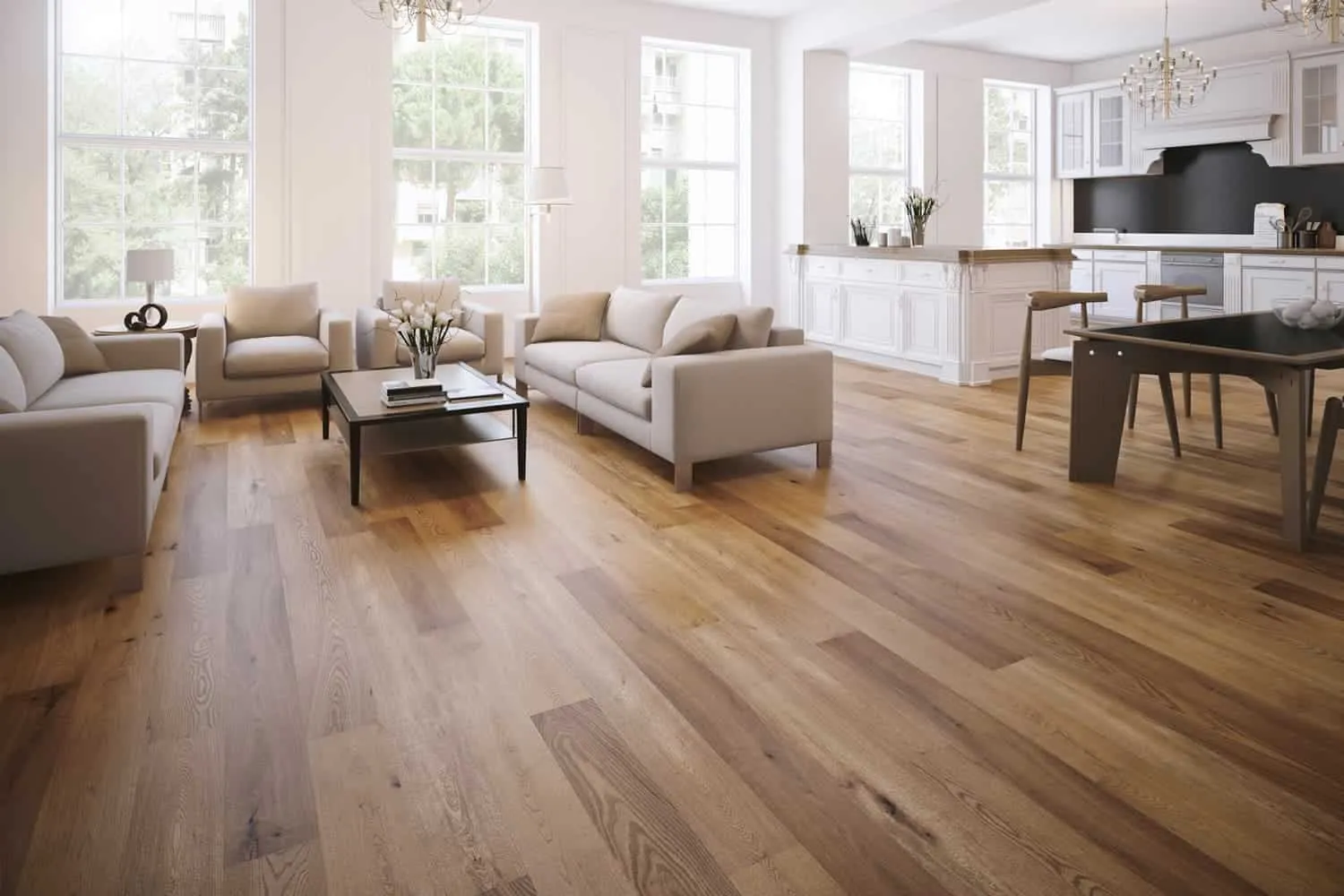One space in your house that demands more consideration when it comes to design is the bathroom. Tiling is commonly regarded as an aesthetic technique but it serves far more functions. When you use tiles on bathroom walls or floors, you get a number of advantages, including radiant heating and moisture resistance. With the variety of designs for bathroom wall and floor tiles available in India, anyone can choose what kind of tiles they want in their bathroom. Tiling is something one can do on their own, the only things you would need are a proper plan, materials, and tools.
If you are planning to install tiles in your bathroom, you have come to the right place. In this article, we have provided step-by-step instructions on how to tile your bathroom. We have also listed the tools you will require for this purpose along with the most popular tile designs for bathroom in India.
Contents
- 1 Bathroom tile design ideas for your home
- 1.1 Bathroom tile design #1 – Dark wall with neutral floor
- 1.2 Bathroom tile design #2 – Checkerboard design
- 1.3 Bathroom tile design #3 – Honeycomb design
- 1.4 Bathroom tile design #4 – All white design
- 1.5 Bathroom tile design #5 – Floral design
- 1.6 Bathroom tile design #6 – Monochromatic design
- 1.7 Bathroom tile design #7 – Moroccan design
- 1.8 Bathroom tile design #8 – Terrazzo design
- 1.9 Bathroom tile design #9 – Wooden design
- 1.10 Bathroom tile design #10 – Herringbone design
- 2 How to tile a bathroom?
- 3 Latest bathroom designs with tiles for homes in India (Image gallery)
- 4 FAQs
- 4.1 Where do you start tiling in a bathroom?
- 4.2 Which tile is best for a bathroom?
- 4.3 Are big tiles better in a small bathroom?
- 4.4 How much does it cost to tile a bathroom?
- 4.5 Do you put the toilet first or the tile?
- 4.6 Should you tile all walls in a small bathroom?
- 4.7 What is the 3-4-5 rule for laying tile?
- 4.8 What is the best direction to lay the tile in a small space?
- 5 Conclusion
Bathroom tile design ideas for your home
Bathroom tile design #1 – Dark wall with neutral floor
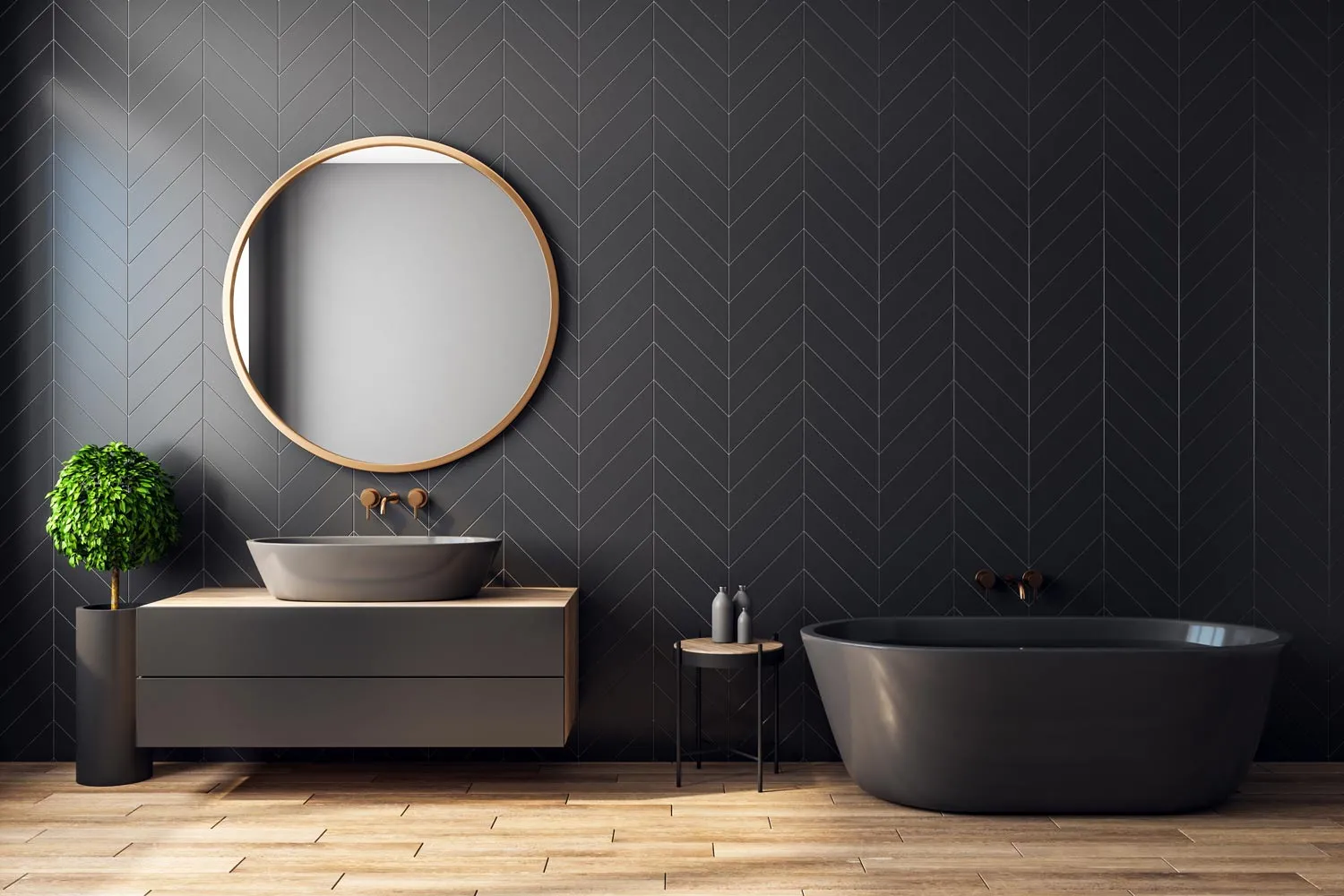
Image source: Westsidetile.com
This design creates a contrast between the floor and the wall with the help of tiles. The bold tiles on the wall look elegant and eye-catching while neutral tiles on the floor add sophistication to the overall appearance of the bathroom.
| Also see: Flooring tiles to grab your gaze (80+ floor designs) |
Bathroom tile design #2 – Checkerboard design
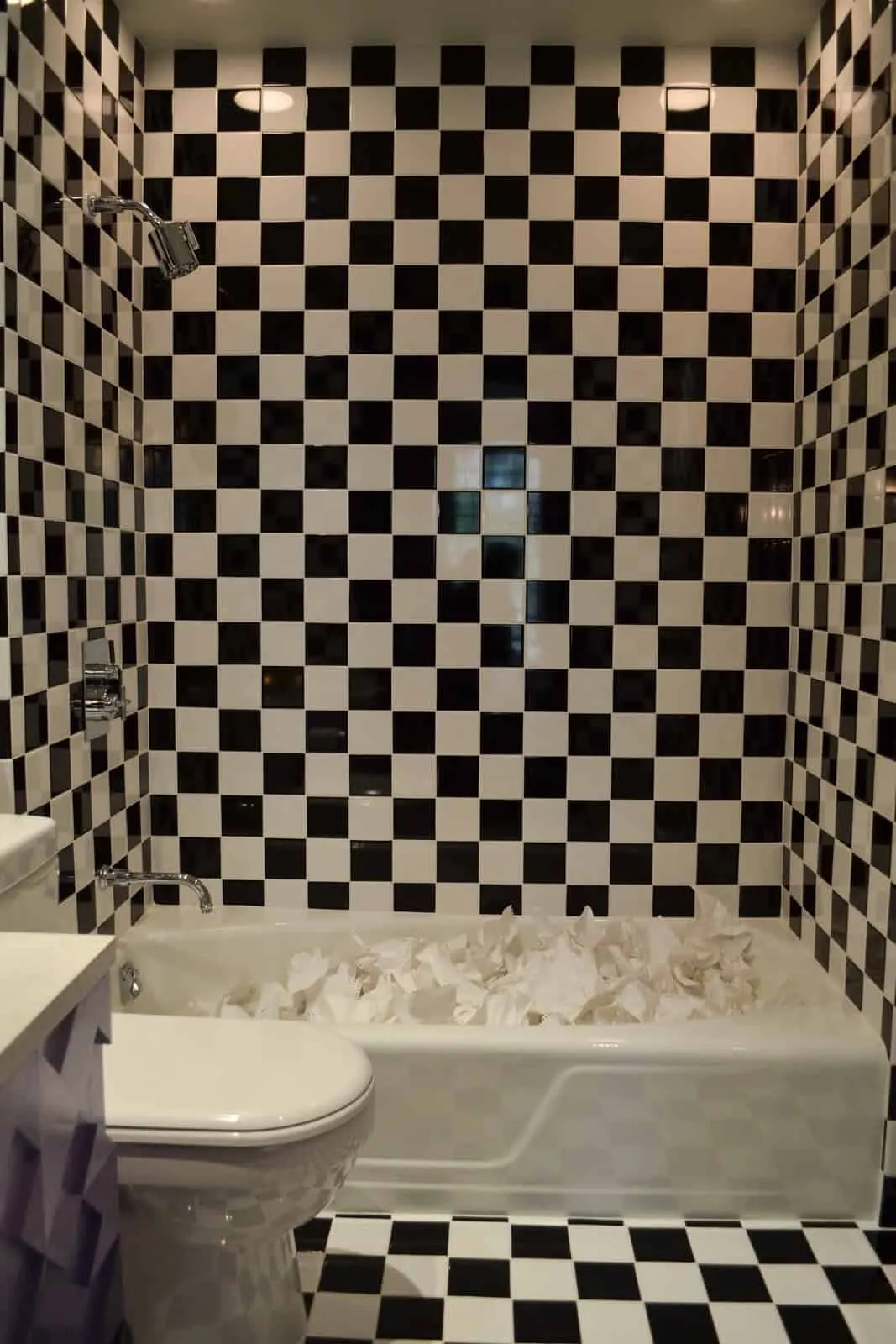
Image source: Pinterest
This contemporary idea adds a timeless touch to the entire bathroom decor. One can either go for the traditional black and white shades or a new combination of tile colours for a distinctive look. Either way, complement this beautiful tiling idea with retro fixtures to take its appearance to the next level.
Bathroom tile design #3 – Honeycomb design
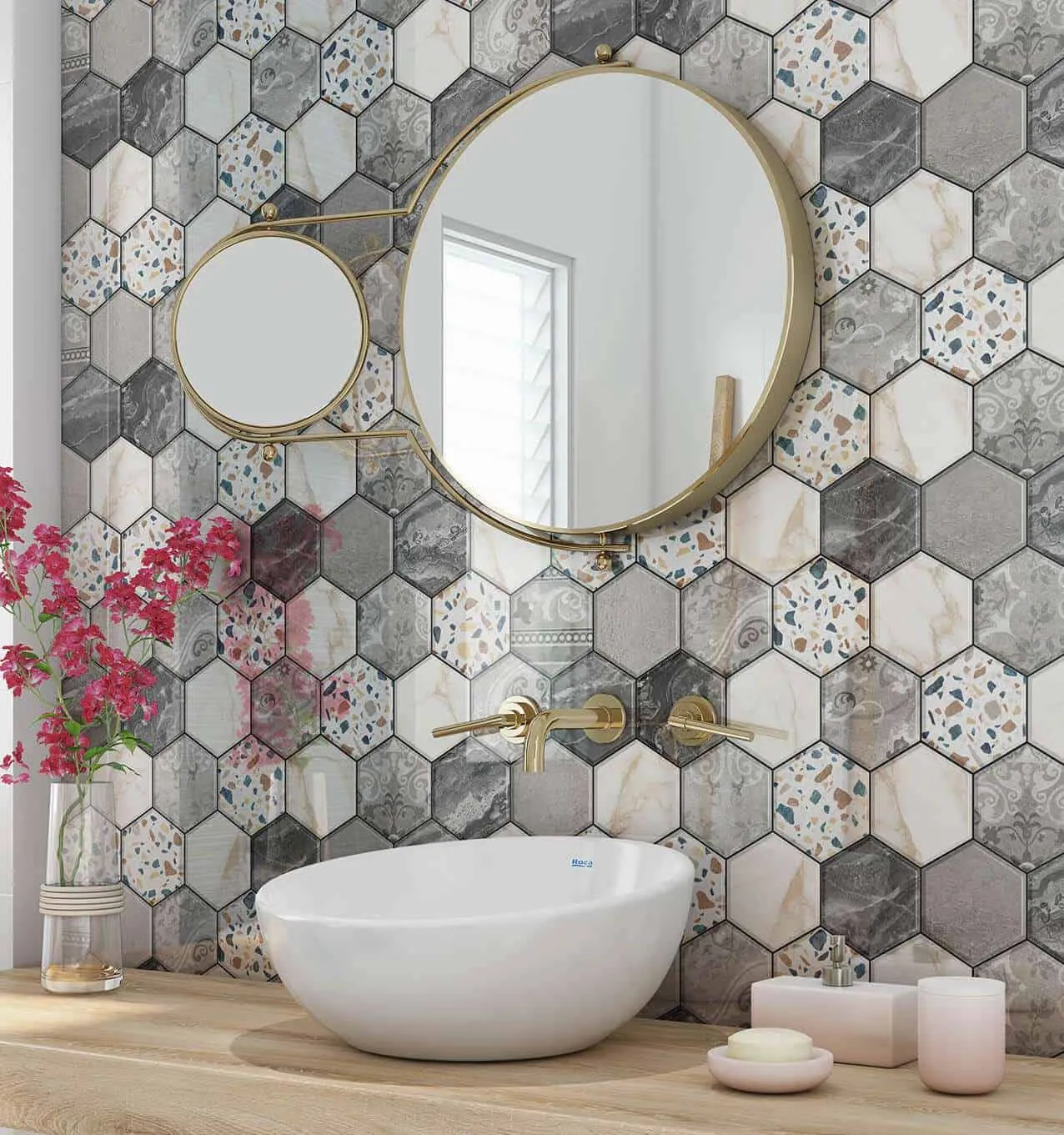
Image source: Rock Salt Print
Honeycomb design has been around for a long time and is still one of the most popular tile design in India. The hexagonal tiles used in this bathroom tile design come in two different sizes which include small hexagons and large hexagonS. Use this tile design to create a classic theme for your bathrooms.
| Also see: 20 Designer bathroom ideas for fancy & functional decor inspiration |
Bathroom tile design #4 – All white design
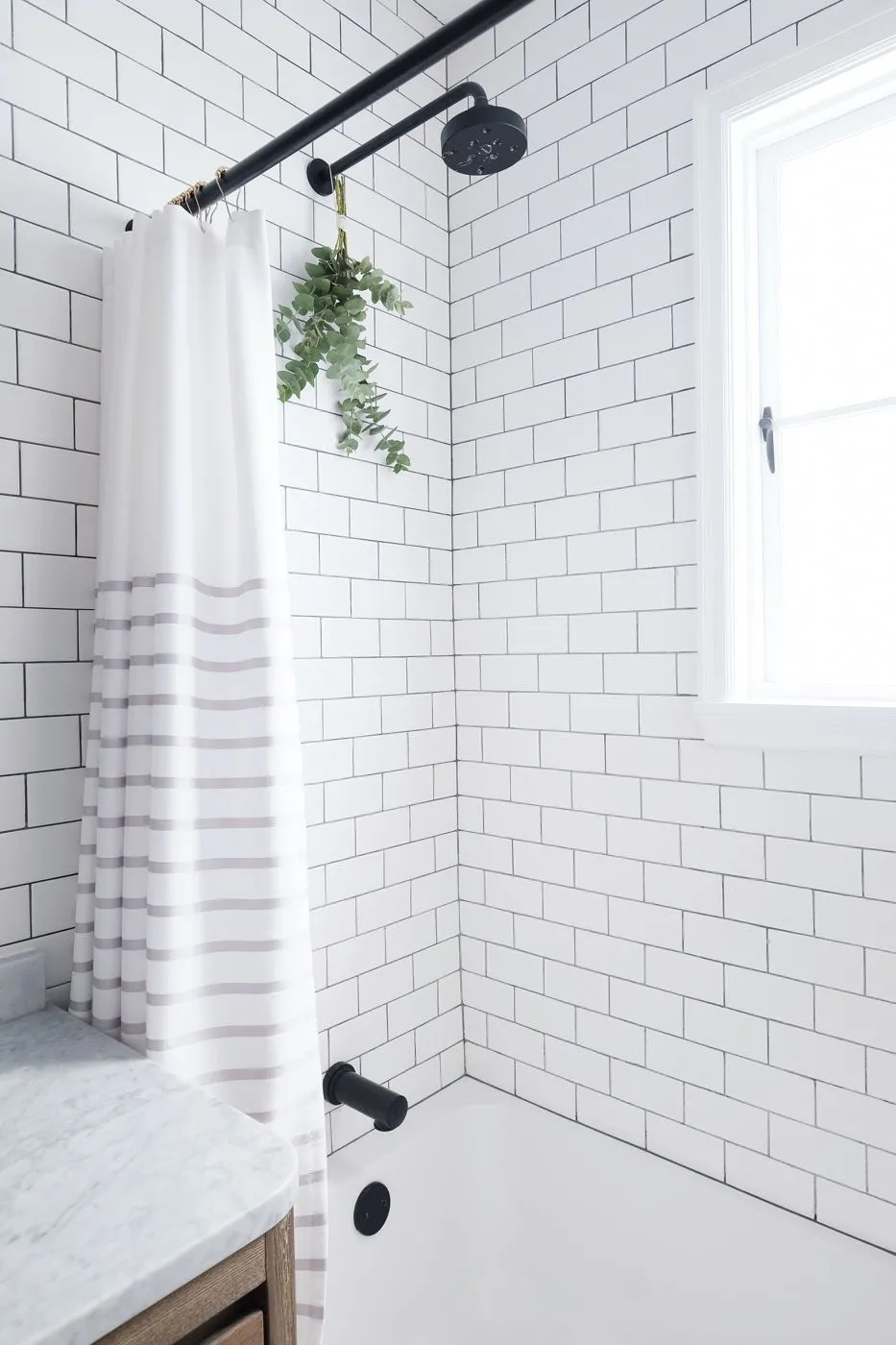
Image source: Hearstapps.com
An all-white bathroom idea can be used to give the bathroom a timeless and soothing appearance. White tiles are available in a wide range of warm and cool shades and materials so you can create a themed bathroom of your choice using them.
| Also see: 70 Bathroom tile designs we are so obsessed with! (Shop online) |
Bathroom tile design #5 – Floral design
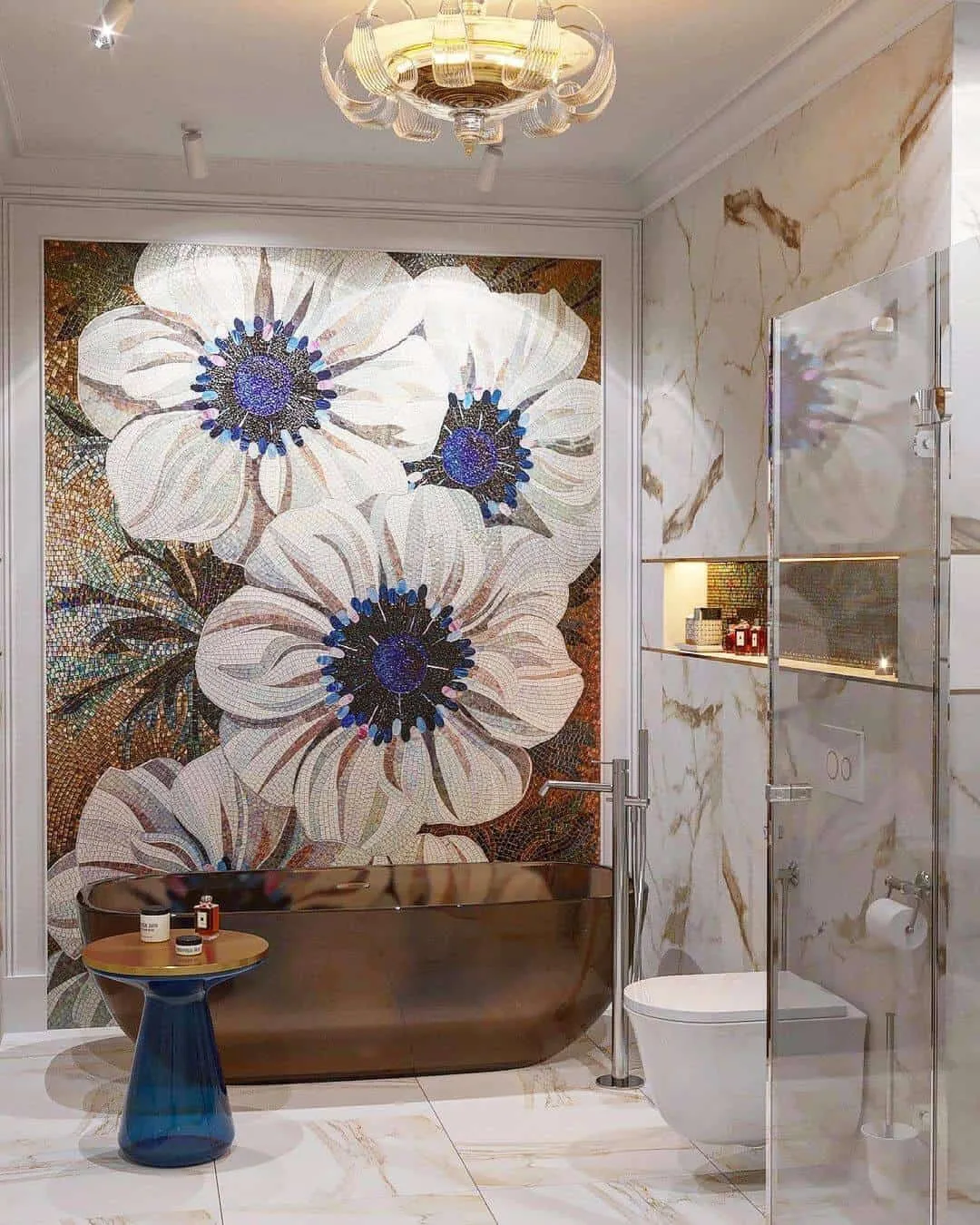
Image source: Me Cart Works
Floral designs for bathrooms are preferred for their regal and appealing appearance. However, these designs can also vary according to the material and shades. You can use tiles with vibrant flower prints to add character to your bathroom decor. If you prefer more subtle colours complement them with the white ceiling for a sophisticated look.
Bathroom tile design #6 – Monochromatic design

Image source: Koloapp.in
In monochromatic ideas, tile shades from the same colour family are used to create distinctive designs. In the case of a small bathroom tiles with darker shades shall be avoided as they make the space look even smaller. With light-coloured tiles all over the space, one can give a grand appearance to the bathroom.
| Also read: The emergence of colours in bathroom design |
Bathroom tile design #7 – Moroccan design
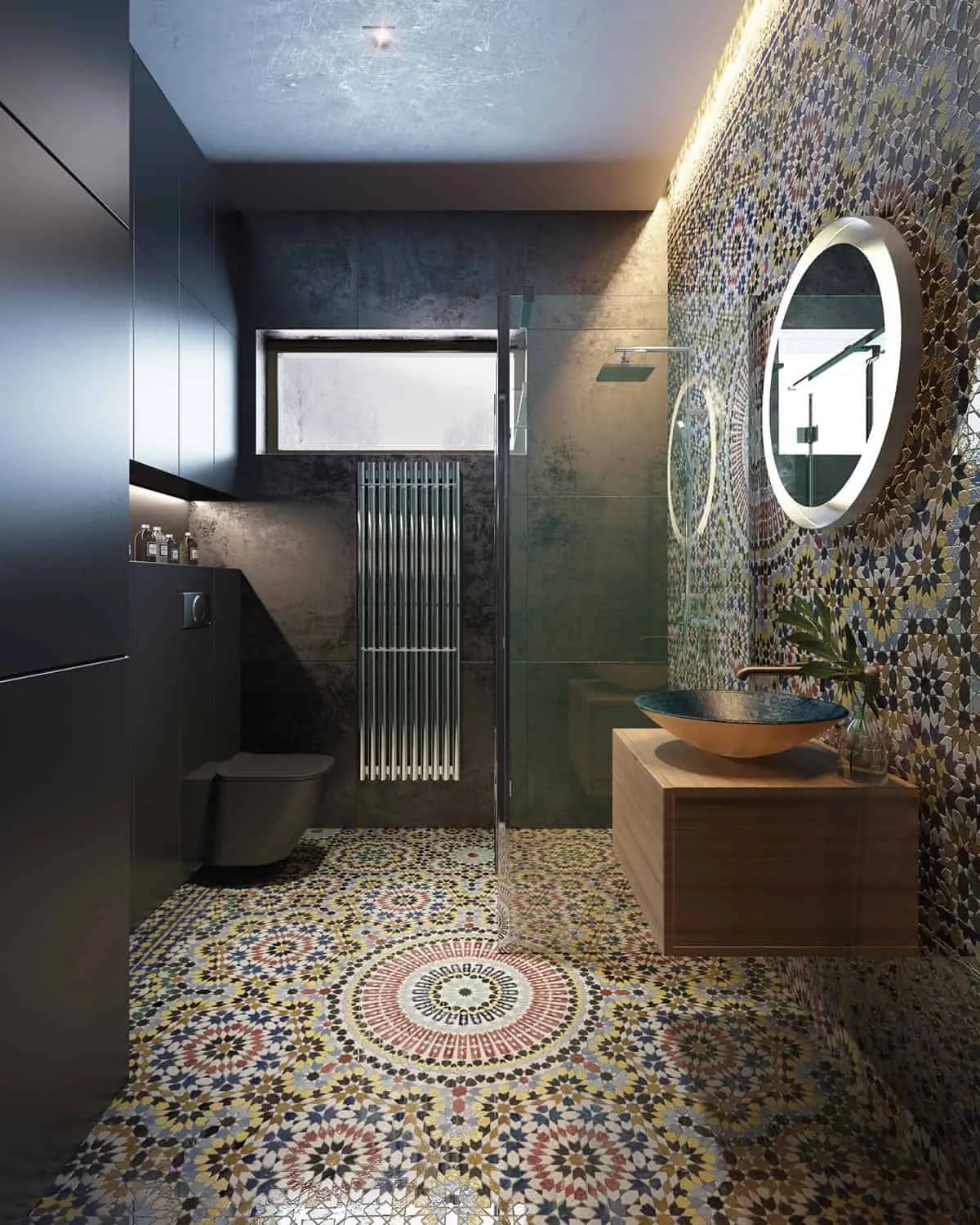
Image source: Yourcoloradospringshouse.com
Moroccan designs are widely regarded as the perfect solution to create an exotic and alluring bathroom. These tiles have an artistic look and can be used for floor and wall tiling. These tile designs don’t stain easily and require minimum maintenance.
Bathroom tile design #8 – Terrazzo design
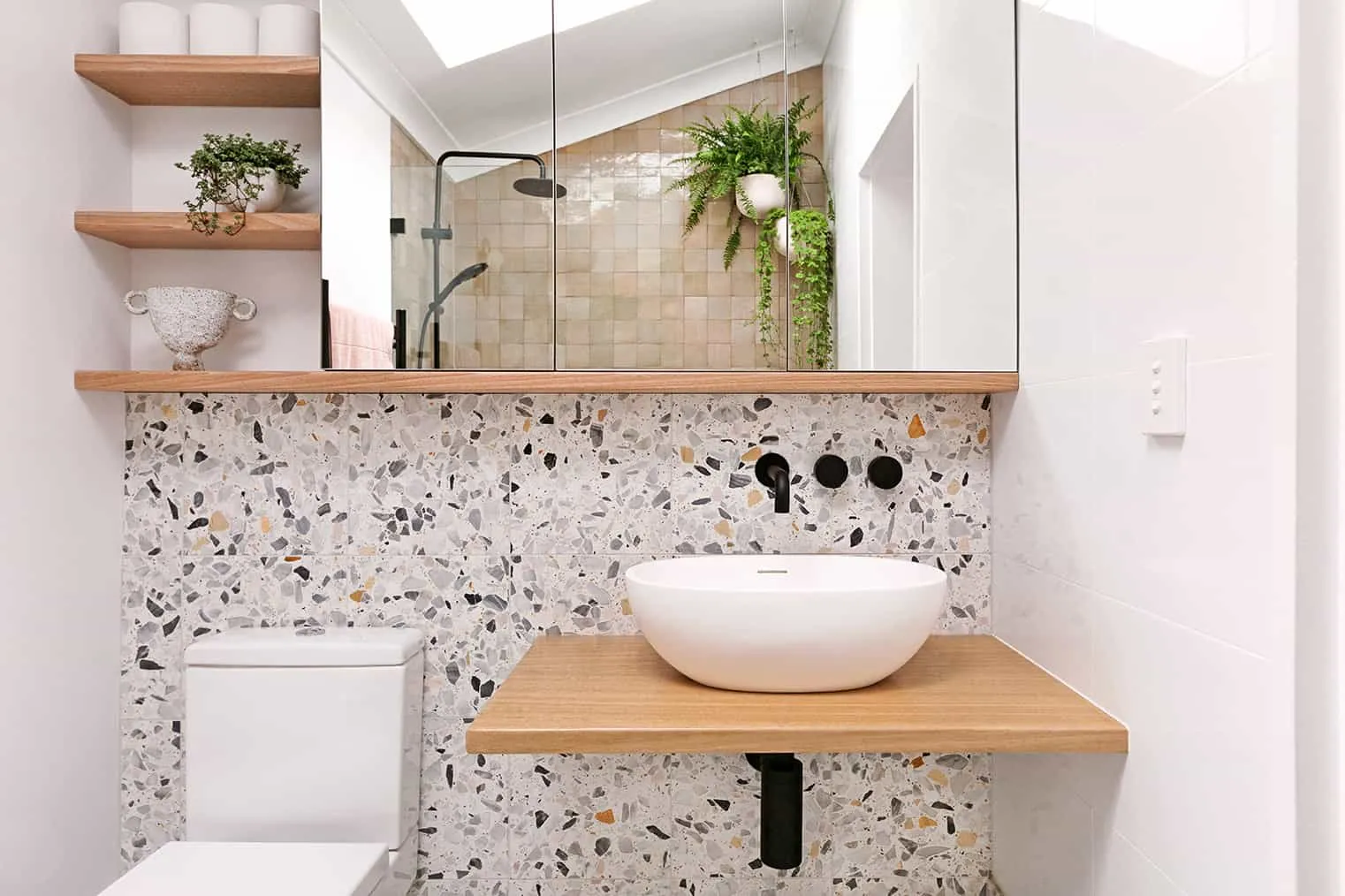
Image source: Wearescout.com
Terrazzo design is regarded as one of the most versatile and remarkable among the top tiling designs. Pair this tiling design with vibrant fixtures to create a luxury bathroom on an average budget.
| Also see: 15 Inspiring modern bathroom designs & trends to try out in 2023! |
Bathroom tile design #9 – Wooden design
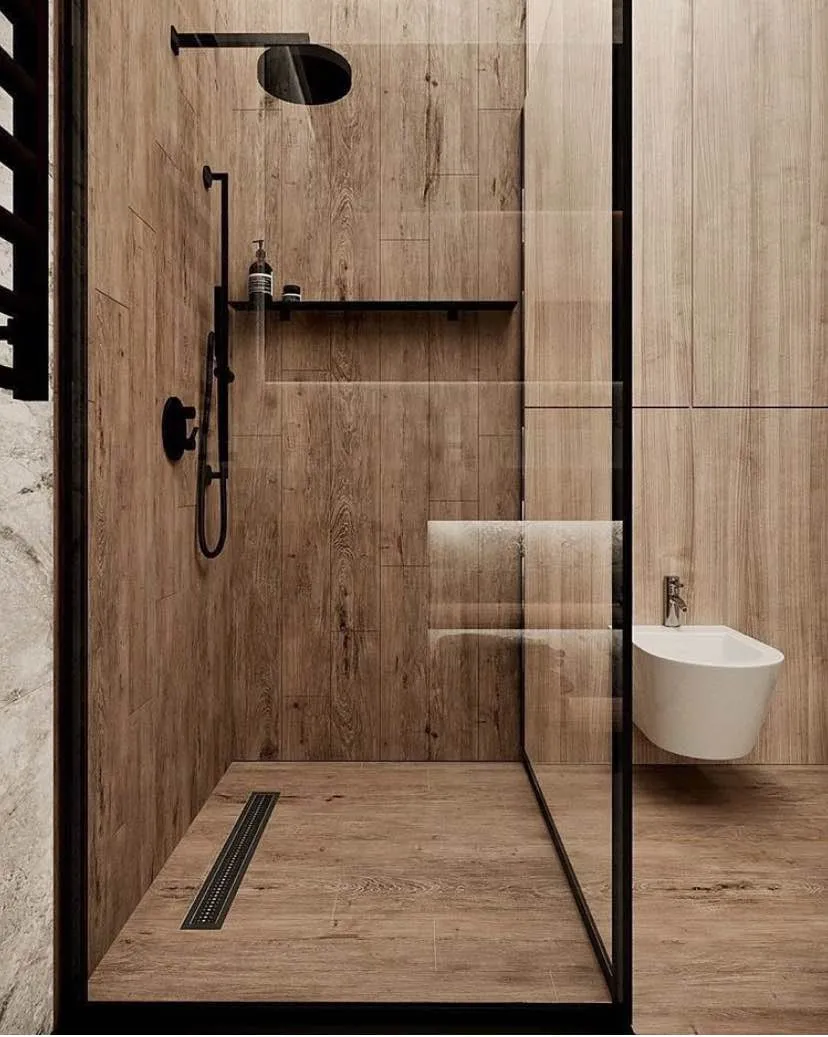
Image source: Bizimages.withfloats.com
It’s a fact that wood can’t be used as a surface in wet places. However, vitrified tiles with a wooden appearance can simply take your bathroom design and decor to a different level. This contemporary tile idea looks classy and requires less care.
Bathroom tile design #10 – Herringbone design

Image source: Superbath.co.uk
Herringbone design for bathrooms can grab attention as it looks modern and suits all kinds of bathroom decor. For a more subtle effect, use the same herringbone tiles for both the wall and the floor, but for a bolder look, use tiles with contrasting colours.
| Also read: 37 En vogue designs of wall tiles to set your space apart (Buy now!) |
How to tile a bathroom?
Tools that you will require
Tile cutters
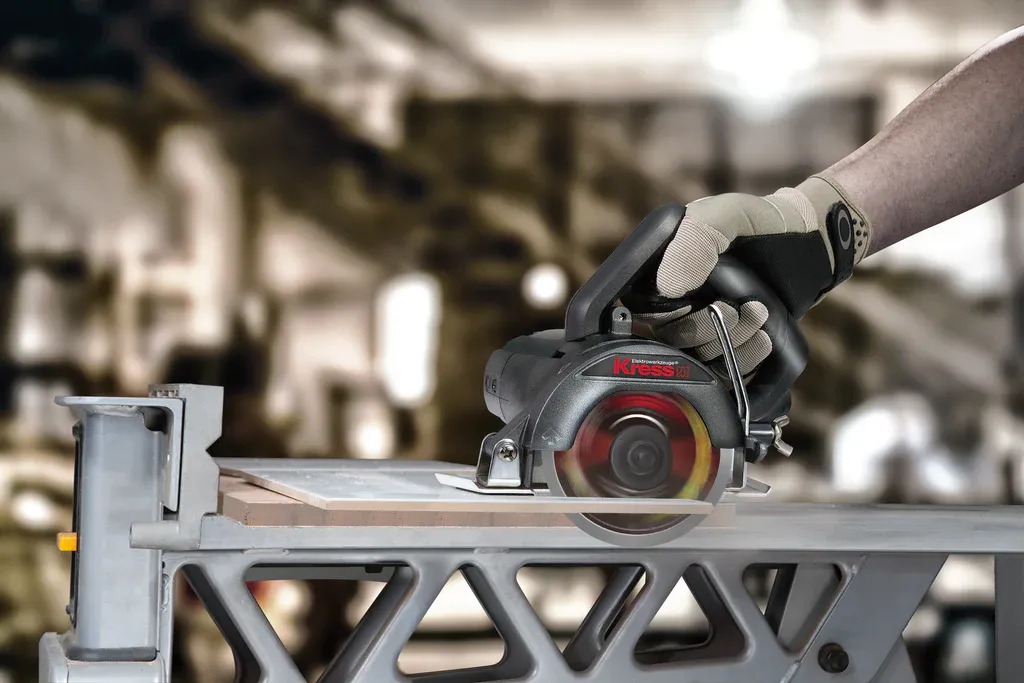
Image Source: Shopify
You may buy tiles of uniform size for your bathroom. However, you will need to cut many tiles for the uneven corners of your bathroom design. For this purpose, you can use a manual tile cutter or a wet tile saw.
Measuring tape
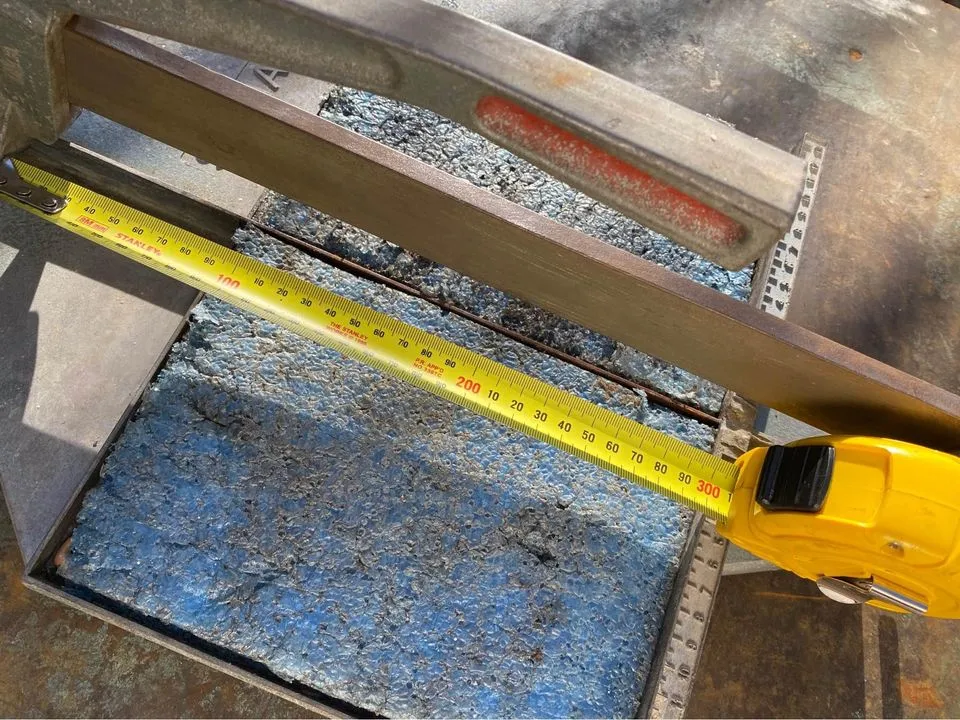
Image Source: Facebook
You can use a simple measuring tape for maintaining accuracy while tiling your bathroom. They are especially helpful in cutting tiles with precision. If you have a large ruler, you can use it as well.
Pencil
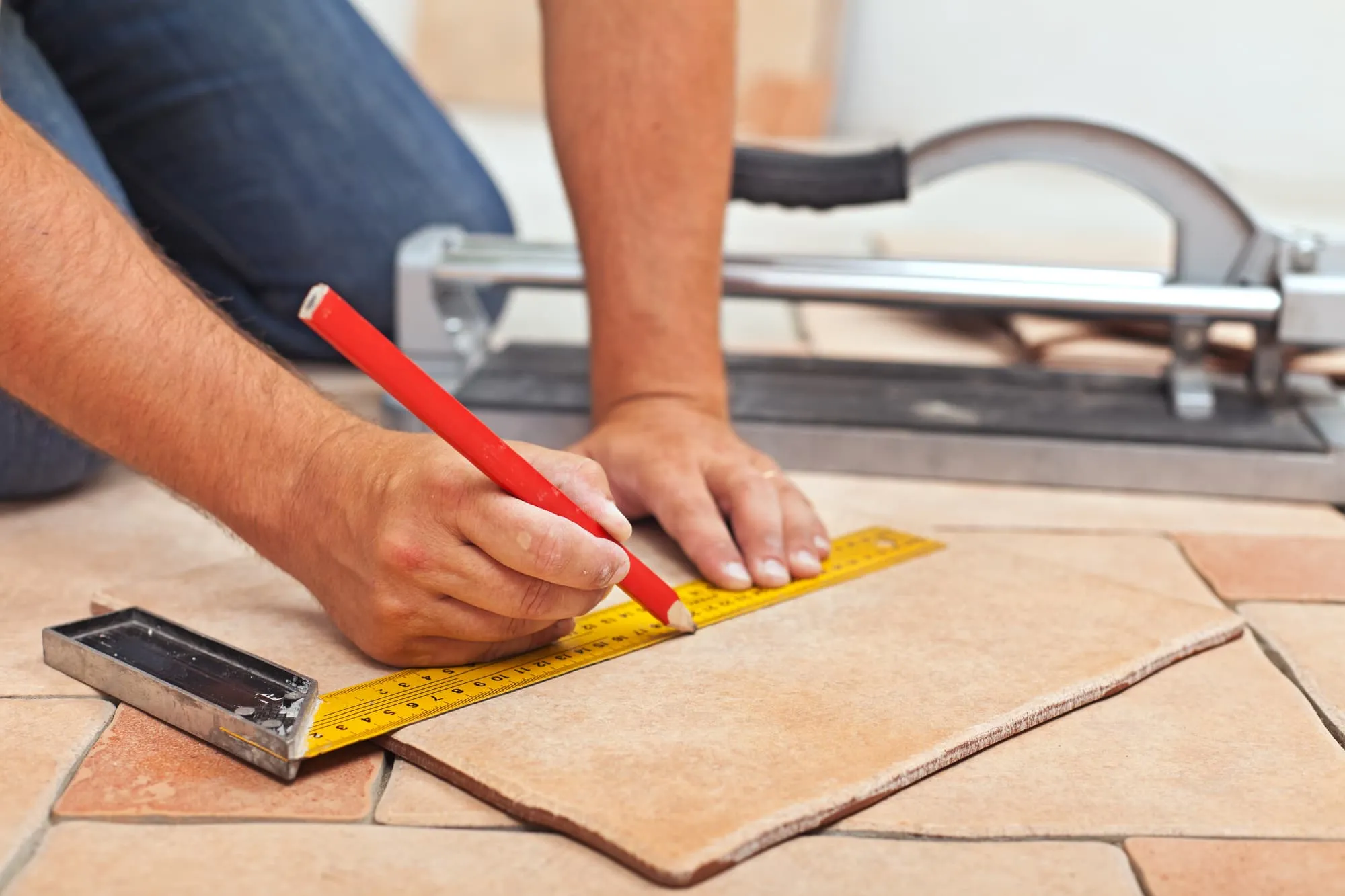
Image Source: New Sunrise Cleaning and Restoration
A pencil will be needed to mark points while you measure using measuring tapes. You can use a basic pencil for this purpose. If you have an erasable marker, it can also be used.
Notched tile trowel

Image Source: Rubi.com
A Notched trowel is a steel-based instrument used to scoop mortar and spread adhesive. It has a notch which helps create an even base out of the rigid mortar.
Paddle or electric mixer
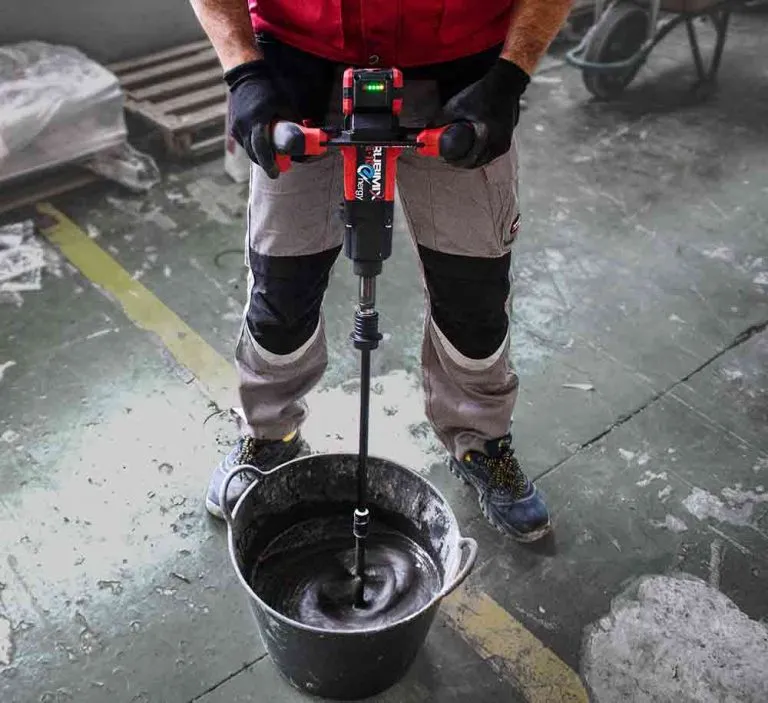
Image Source: Rubi.com
Mixing is very important when it comes to mortar. To mix the mortar or tile adhesive, you will need a paddle mixer or an electric mixer.
Rubber or plastic buckets
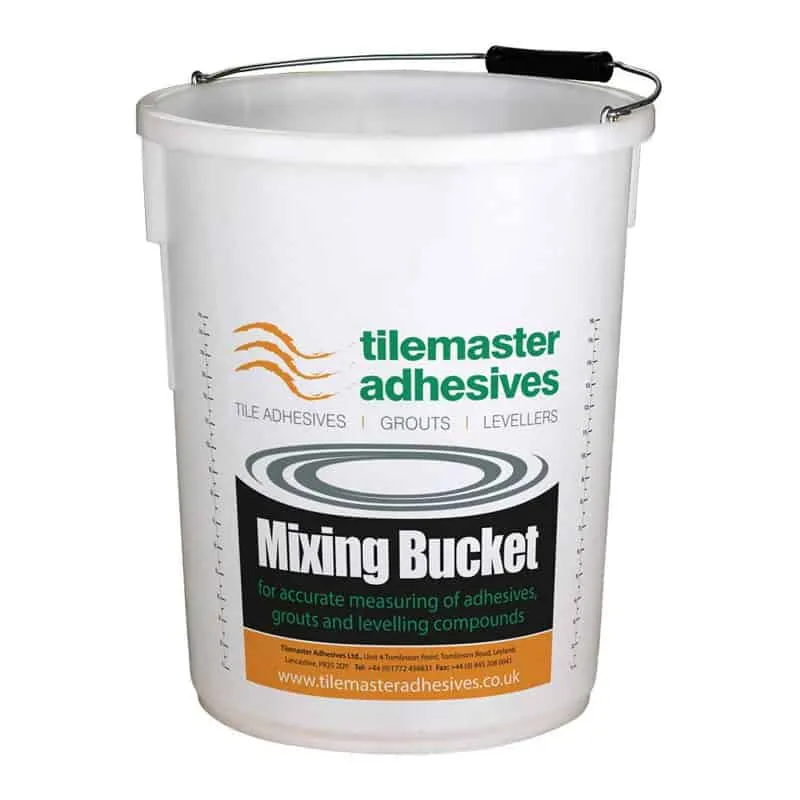
Image Source: Protilertools.co.uk
Buckets are necessary while tiling your washroom as they serve multiple purposes. You will need them to mix mortar. You will also need a water-filled bucket handy all the time while tiling.
Grout floats

Image Source: Tomand.co.uk
Grout is a paste made from mortar used to fill the gaps between tiles. You need grout floats which are made only for the purpose of ensuring an even and clean distribution of grout.
| Also read: Grouting for buildings: All you need to know! (+demo videos) |
Tile spacers

Image Source: Tilingadvice.co.uk
Tile spacers are used to create an even gap between all the tiles so that the grout can be filled evenly. They are not heavy on the pockets and serve an important purpose.
Things to consider while choosing tiles
Types of tiles
Bathroom tile designs are easily available in India in materials like ceramic, porcelain, terracotta, marble, slate, and many more. Nevertheless, the choice is yours. For example, if you want your bathroom to exude luxury, marble tiles can be at the top of your list. However, if you want more long-lasting and sturdy tiles for your bathroom, slate should be your first choice.
Dimensions
For smaller bathrooms, wall tiles with a dimension of 4 x 4 inches can be used. However, in a larger bathroom, tiles with a dimension of 12 x 24 inches can be installed. 12 x 12 square inches is the standard tile size for bathroom floors.
Your budget
Check the list given below and decide which type of tile best suits your budget.
| Type of tiles for bathroom design in India | Bathroom tiles price per sq. ft. |
| Ceramic tiles | Rs “30 to 65” |
| Wooden tiles | Rs. “40 to 125” |
| Porcelain tiles | Rs “65 to 70” |
| Vinyl tiles | Rs “80 to 160” |
| Marble tiles | Rs “90 to 250” |
Texture
There are numerous textures & designs available in the Indian market for tiles, including wave, wooden, mosaic, and many more. The main advantage of using textured tile for design in bathrooms is that they are anti-skid due to their relatively rough surface. Additionally, these tiles also come with moisture resistance.
Tile and grout colour
Choosing the tile colour for your bathroom floor and wall may be simple for some people and difficult for others.
Most people prefer to use light shades in the bathroom like cream, beige, white, grey, and more. Blue, green and pink coloured tiles have also gained popularity for bathroom floors and walls in the last few years.
The most popular grout colours among the professional tiling community are black and white. Some of the other well-liked colours for grout are mossy green, and brown.
| Watch this video: Tips and tricks for choosing grout colour for tiles |
Finish
The visual appeal of a tile is determined by its finish and colour. Ceramic tiles come in a variety of finishes, including glossy, rustic, matte, and others. The finishes available for stone tiles include natural, satin, brushed, and tumbled. So, depending on your requirements and the overall look you want to achieve, you can opt for any of these types.
Step-by-step bathroom tiling instructions
Get your bathroom ready for tiling
Make sure that the surface you are about to tile is clean. In case you have old tiling on your washroom floor or wall, remove it very carefully. New concrete must be dried up well before you design it with bathroom tiles
Waterproof your bathroom well

Image Source: Glorious Enterprises
Waterproofing is a must before tiling your washroom. Firstly, apply primer with a paint roller to the walls and floor of the bathroom. After the primer dries up if you have any holes or gaps in your floor or wall, fill them with silicon. Apply masking tape around the wall and floor to the level you want to make your bathroom waterproof.
Now, you can apply the waterproofing agent to the walls and floor. Then, add a waterproofing membrane to cover the cracks in the wall and floor and let it sit for at least 24 hours. The next day, put an extra coat of waterproofing on the walls and floor and leave it for another 24 hours. Now, your bathroom is ready for tiling.
Measure the shower dimensions to know how many tiles you need
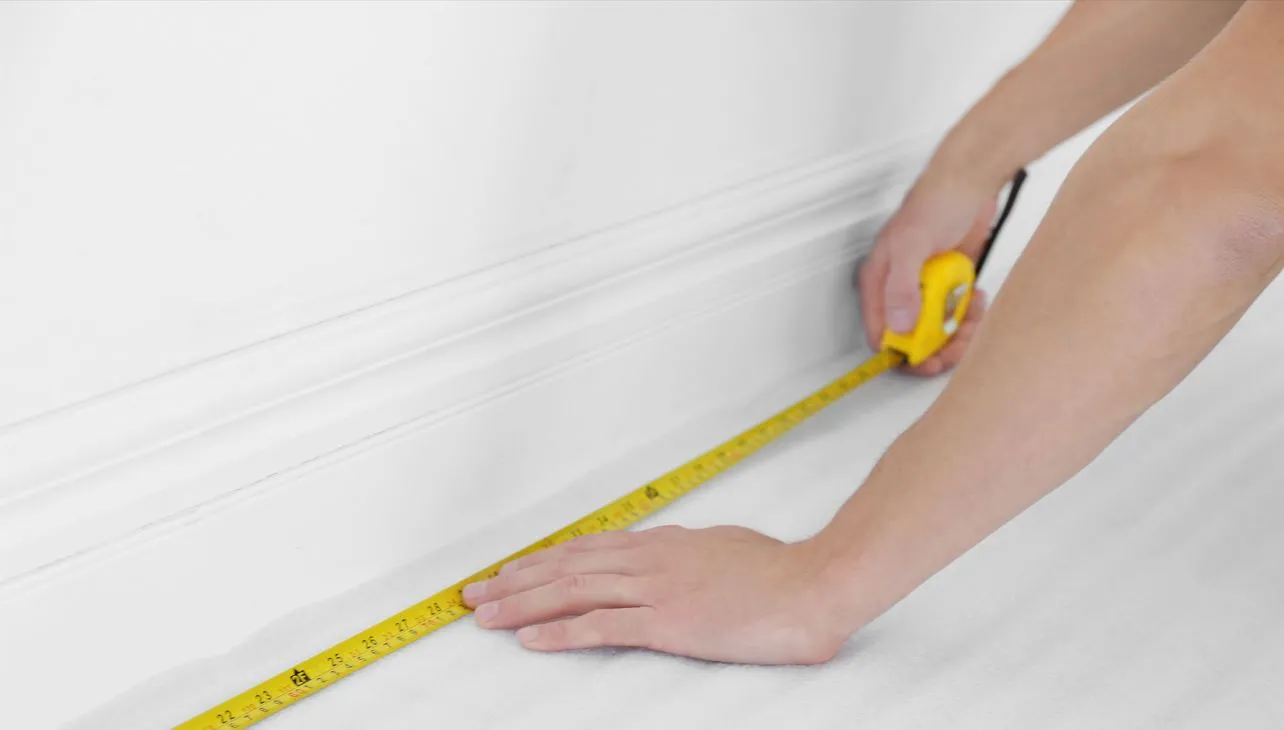
Image Source: Americas Floor Source
Taking accurate measurements is essential when tiling your washroom wall and floor. Measure each area of your bathroom precisely and then determine how many tiles you will need based on the size of the individual tile. Another method to ensure precise dimensions is to dry-lay the tiles.
Start laying tiles now
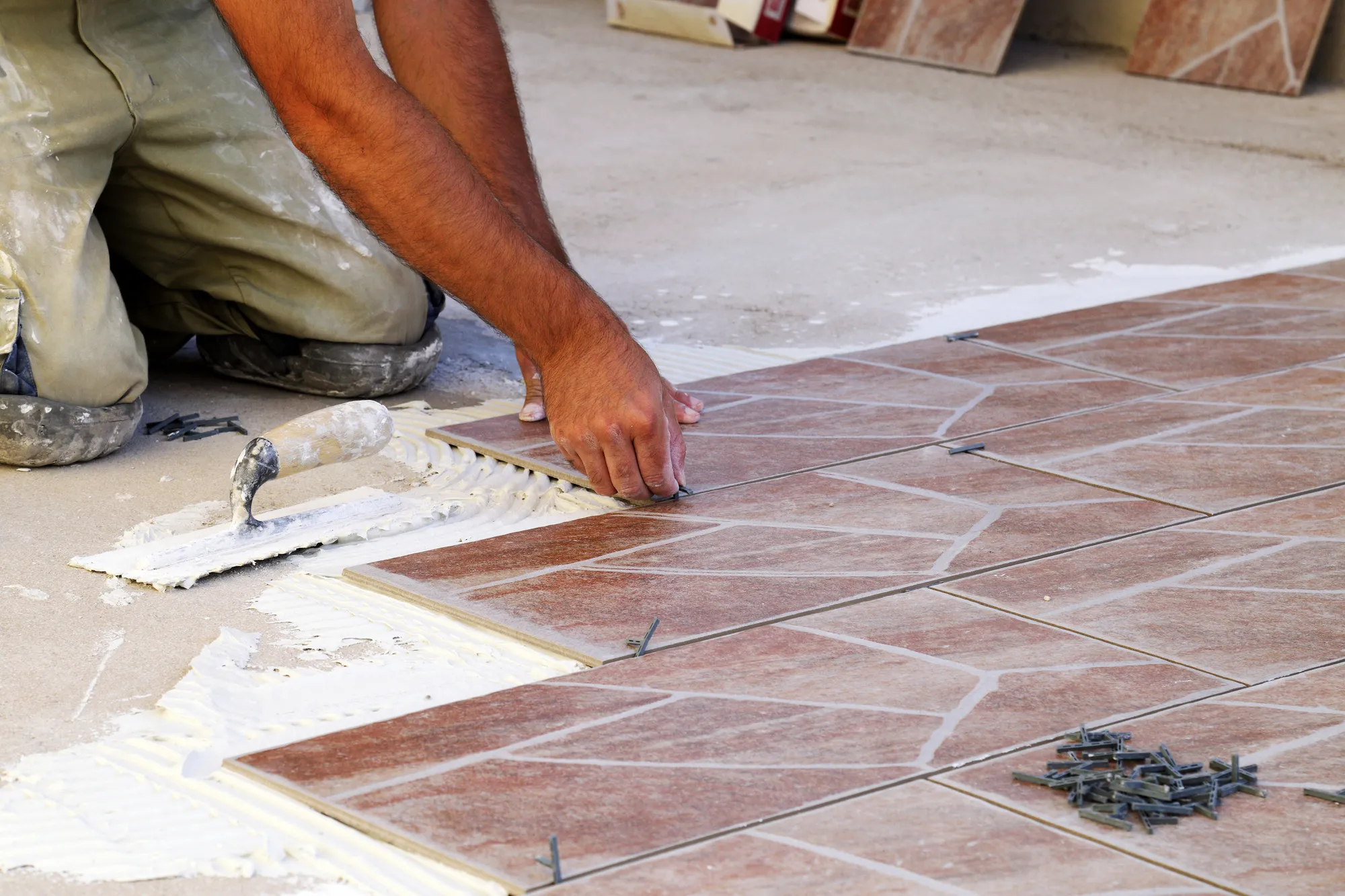
Image Source: Rubi.com
Once you are done with the measurements, start laying tiles from the bottom using thin-set mortar. Cut the tiles wherever necessary before laying. You can also make holes in tiles before laying them around the fixtures.
At this stage, use spacers to maintain consistency. One thing to keep in mind here is laying tiles on walls before the floor to avoid stepping on drying tiles.
Apply grout and your job is done
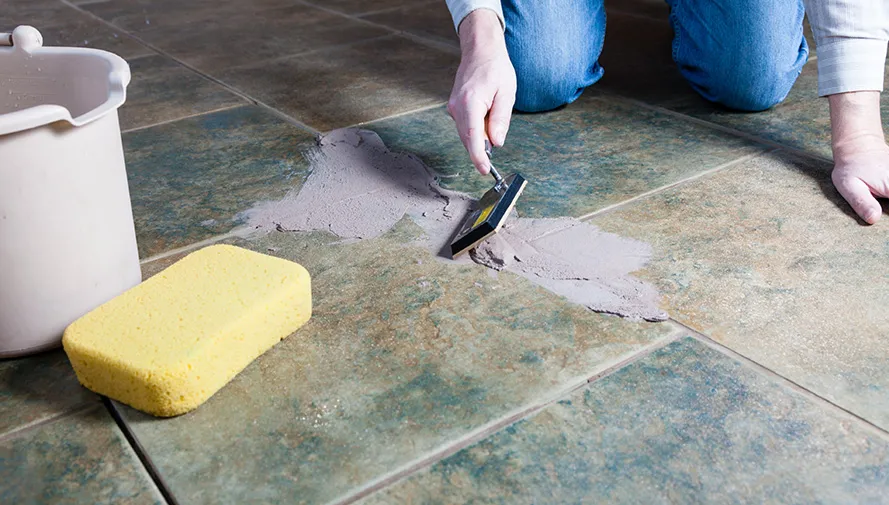
Image Source: Ms Waterproofing.com
The final stage of this process is applying grout using grout floats. Before starting this process, make sure that your tiles have dried up. Fill all the spaces between individual tiles using grout. Meanwhile, keep a sponge in your hand to clean the tiles. The grout will need more than two days to dry properly. Finally, your tiled bathroom is ready.
Latest bathroom designs with tiles for homes in India (Image gallery)
-
Image Source: Trendir.com
-
Image Source: Colorker
-
Image Source: Tilesrus.se
-
Image Source: Shopify.com
-
Image Source: Shopify.com
-
Image Source: Diary of a Tile Addict
-
Image Source: Forbes.com
-
Image Source: Forbes.com
-
Image Source: Futurecdn.net
-
Image Source: Husplaner.se
-
Image Source: Minoli.co.uk
-
Image Source: First Cry
-
Image Source: AGL Blog
-
Image Source: Westsidetile.com
-
Image Source: Atlas Concorde
FAQs
Where do you start tiling in a bathroom?
For laying them on the floor of a bathroom you should start from the centre as this will make your work easier and neat. Similarly while tiling the walls of your bathroom start from the bottom if you start from the top the tiles may slip and break.
Which tile is best for a bathroom?
Because of their superior grip, affordability, versatility low maintenance, and non-porosity ceramic and vitrified tiles are the most commonly used and preferred bathroom floor tiles.
Glazed and polished ceramic slabs are considered ideal for bathroom walls as they have a protective layer making them resistant to stains and water. These slabs are cost-efficient and still offer a large variety of designs and colours.
Are big tiles better in a small bathroom?
A large tile can directly benefit a small bathroom as the walls and floor are less cluttered and the room appears larger with fewer grout lines.
| Also see: Small bathroom ideas: 25+ smart tips for a streamlined aesthetic |
How much does it cost to tile a bathroom?
Check the list below to know about the cost of tile designs for your bathroom in India:
| Type of bathroom tiles | Price per sq ft |
| Ceramic tiles | Rs 30 – Rs 65 |
| Wooden tiles | Rs 40 – Rs 125 |
| Porcelain tiles | Rs 65 – Rs 70 |
| Vinyl tiles | Rs 80 – Rs 160 |
| Marble tiles | Rs 90 – Rs 250 |
Do you put the toilet first or the tile?
It’s always recommended to lay the floor tiles before installing a toilet because of the following reasons:
- If you install the toilet before tiling, replacing it will be extremely difficult, and the process may cause damage to the tiles and waterproofing.
- Tiling the bathroom after installing the toilet may damage the toilet as it’s very fragile.
- It’s tough to install tiles near the toilet if it’s preinstalled and may cause leakage of water as well.
Should you tile all walls in a small bathroom?
Tiling the entire wall is a good idea if you want your small toilet to appear larger. As a result, the appearance of a fully tiled bathroom can enlarge a smaller area. The smaller bathroom can more easily be transformed into a wet room with tile slabs. Also, less elaborate detailing provides a cleaner transition between tiled walls and floors.
What is the 3-4-5 rule for laying tile?
The 3 4 5 rule is a way of laying tiles symmetrically using perfect measurements. This rule states that if you measure 3 units along one wall and make a mark, then 4 units along the other wall and make a mark, the distance between the two marks should be 5 units. If the distance between the two marks is greater than 5, the angle is greater than 90°, otherwise, the angle is less than 90°.
What is the best direction to lay the tile in a small space?
A narrow room further elongates the space, giving the impression that it is both longer and narrower than it actually is. Installing the tiles diagonally will solve this issue. This draws the eye out to the corners of the room, which seemingly extends the area. Therefore, it’s always recommended to lay the tiles vertically as it makes the space appear wider and larger.
Conclusion
In India, designing a bathroom with tiles might seem like work that can only be done by professionals, but that’s not the case. With a proper plan and the needed tools, any individual can do bathroom tiling. When you do the complete process of tiling design by yourself, be patient, as tiles and grout need a lot of time to dry properly. Another thing to keep in mind is that when you cut the slab, they might end up having rough edges. In such cases, use a sanding block for a clean and polished look.
Now that you have studied this detailed DIY manual for your bathroom, you are ready to give it a brand-new look of your choice. The above-mentioned list of tools required for this process will definitely come in handy for you. So, happy tiling!
*The featured image used in the article is from Paintersofsheffield.co.uk


